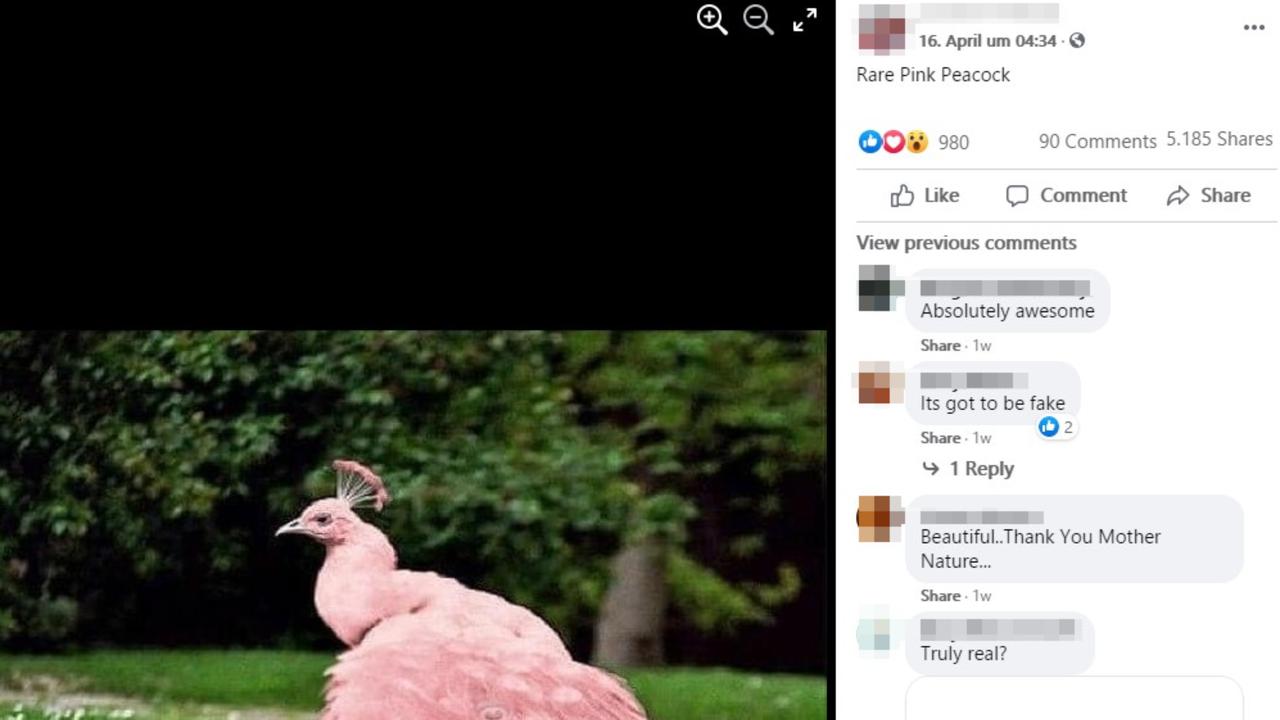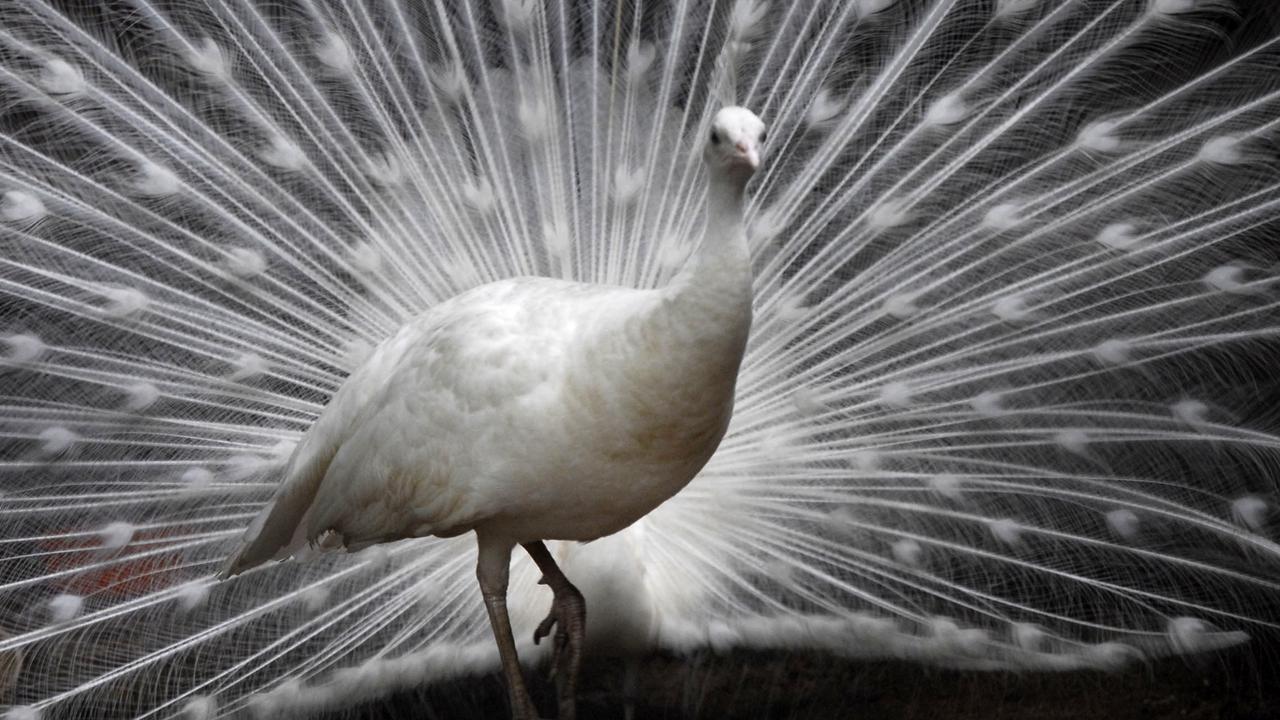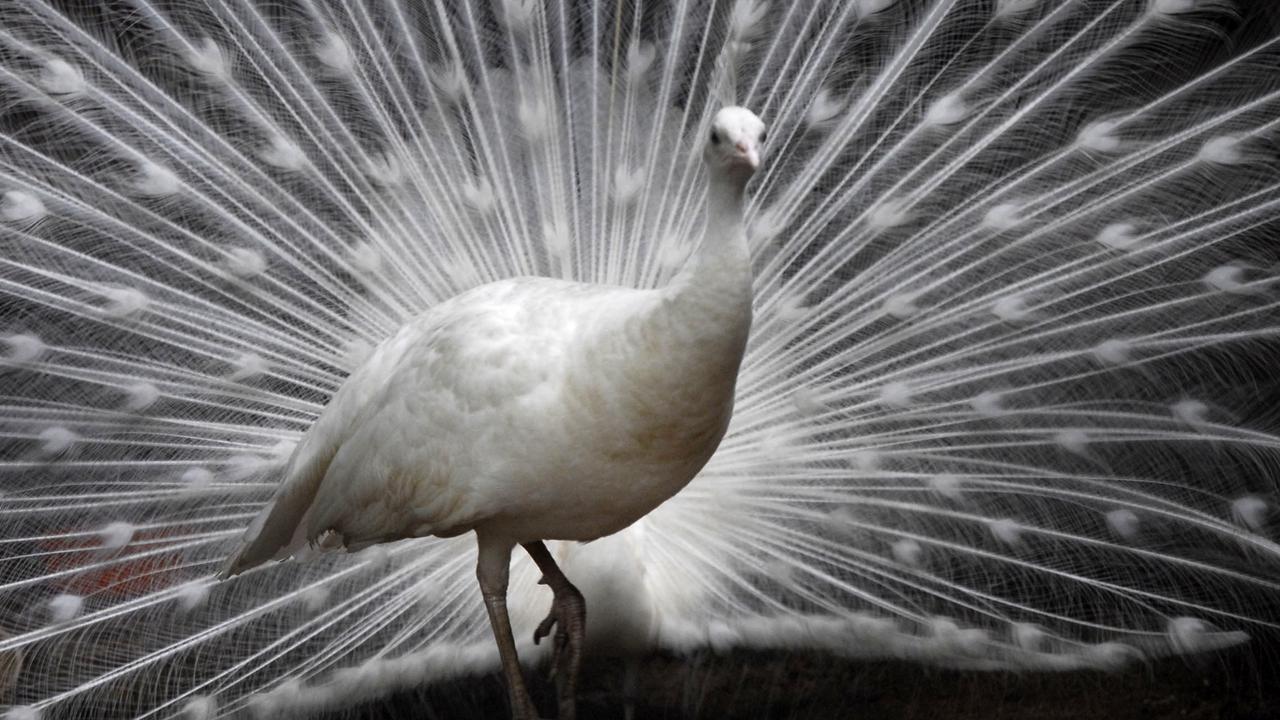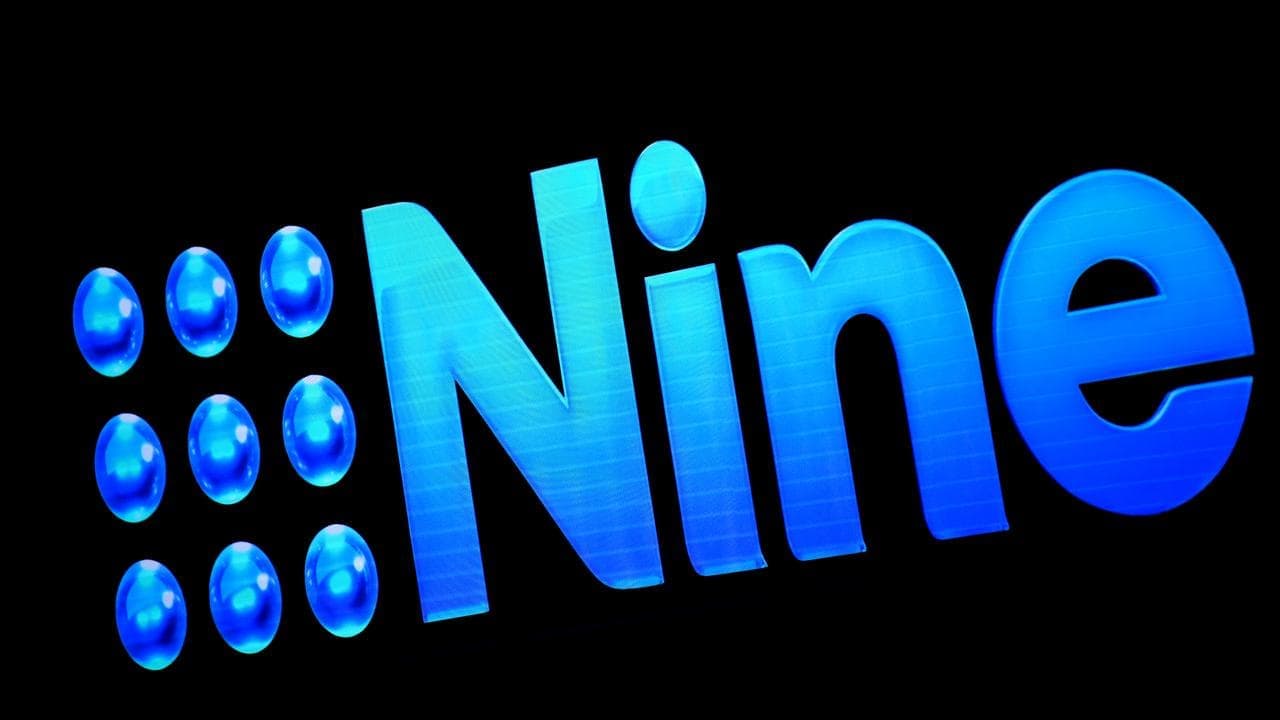The Statement
An eye-catching photo claiming to show a "rare pink peacock" has received more than 28,000 views and 5000 shares on Facebook after being posted by an Australian user on April 16.
The same image of the blushing bird has previously done the rounds on social media, including in this widely-shared post from 2016. Numerous other photos have previously been posted to social media - here and here - with claims about the fabled bird going back to at least 2013.

The Analysis
Peacock experts in Australia and the US have told AAP FactCheck that pink peacocks don't exist - and the image is fake. The photograph appears to have been digitally altered by colouring a photo of a rare white peacock.
Dennis Fett, the co-founder of the Peacock Information Center, based in Iowa, told AAP FactCheck that claims about the existence of pink peacocks have been around for many years but are "as real as pigs flying".
"After hearing from so many people on these different colour types on the web or social media, it was obvious by our trained peafowl eyes that they were manipulated by infrared filters," Mr Fett said in an email.
"To be very specific, no there are no peacocks that are pink. Perhaps somebody might've used food colouring to dye a peacock pink, but there are no such colour types in my experience over 40 years."
Mr Fett, who dubs himself "Mr Peacock", even published a video of made-up "orange and pink peacocks" in 2018 to demonstrate how easy it is to change the colour of the animals with simple computer edits.
"The only place you're ever going to find these (peacocks) are on this video," he jokes.
The pink peacock photo seems to have been created by altering a real image of a white peacock that has previously been published on the internet. Using a reverse image search, AAP FactCheck found a matching white peacock image published by a Reddit user on October 1, 2011. Other examples of white peacocks sporting their plumage can be seen here, here and here.
White peacocks are a variant of the Indian blue peafowl, the national bird of India. Their striking white feathers are caused by a genetic mutation known as leucism, which causes a loss of the colour pigments in their plumage.
Indian peafowl expert Sonika Kushwaha, who is a wildlife biologist and CEO of the Indian Biodiversity Conservation Society, told AAP FactCheck that three species of peafowl exist - the Burmese peafowl, African/Congo peafowl and the Indian peafowl - but the pink variety is nothing but an internet hoax.
"There are no pink peacocks," Dr Kushwaha said in an email.
A digital media expert told AAP FactCheck that changing a picture of a white peacock into a pink peacock can be done in a matter of seconds using photo editing software.
T.J. Thomson, a senior lecturer in visual communication and media at Queensland University of Technology (QUT) and associate editor of Visual Communication Quarterly, said digital images "can be easily manipulated for sensationalist effect with relatively little skill".
"Simple colour adjustments, for example, can be accomplished with just a few clicks, while additions, removals, or duplications are also easily possible … tweaking an existing image can take mere seconds for something like a colour shift using editing software like Photoshop," he said in an email.
Dr Thomson proved how easy it is to fake the pink peacock image in question, recreating a similar image for AAP FactCheck in less than a minute using his own computer.
He noted that the pink peacock image includes ornamental peacock eyespots on its feathers, known as ocelli, which would have been painted or cloned in. This would require additional editing time, Dr Thomson said, but "is still doable within 5-10 minutes, depending on the user's skill and the level of realism desired".

The Verdict
Pink peacocks don't exist. The Facebook post image in question is the result of "fowl play", with a photo of a white peacock having been digitally altered to make the bird appear pink.
False – Content that has no basis in fact.
AAP FactCheck is an accredited member of the International Fact-Checking Network. To keep up with our latest fact checks, follow us on Facebook and Twitter.












